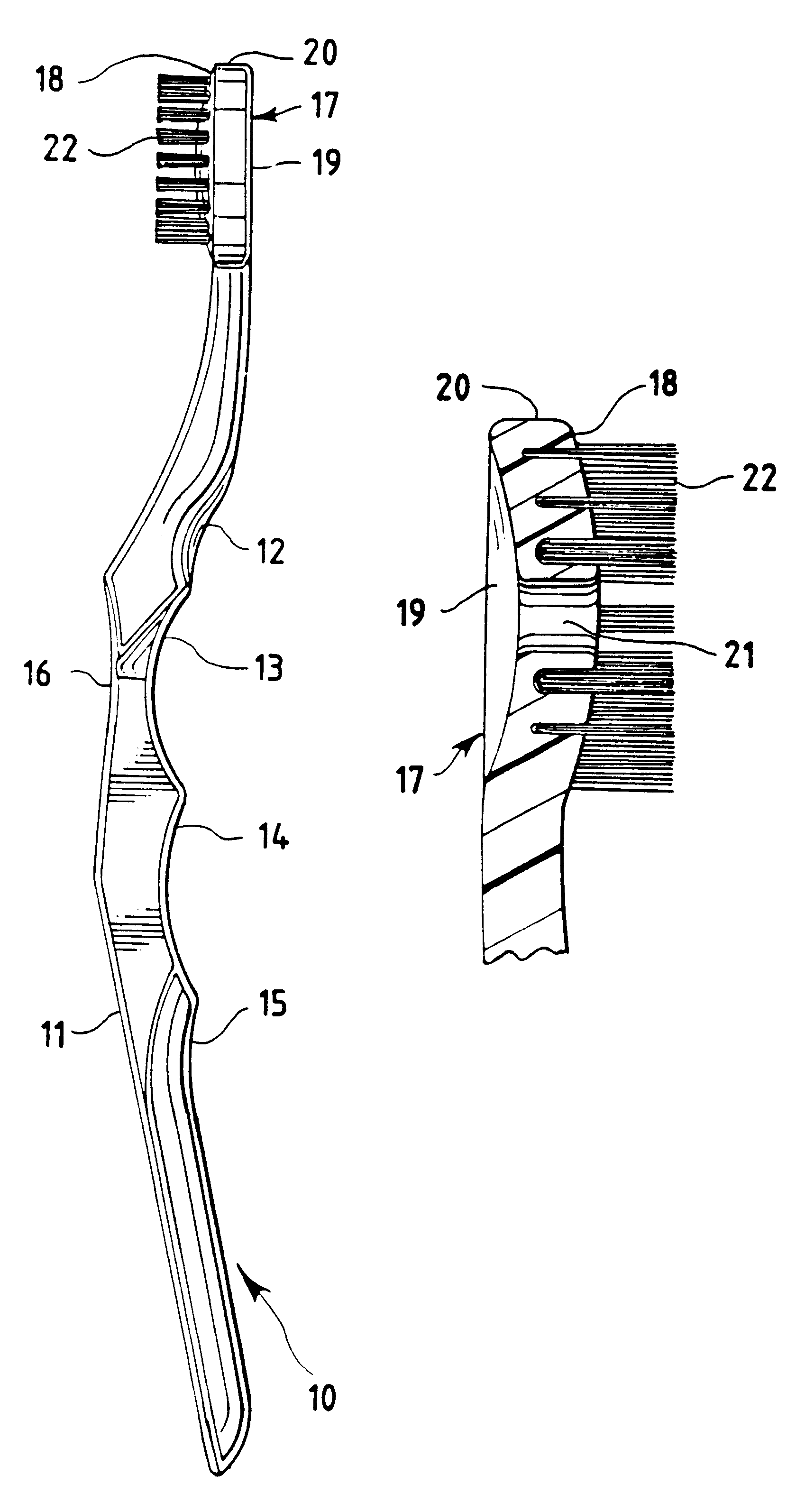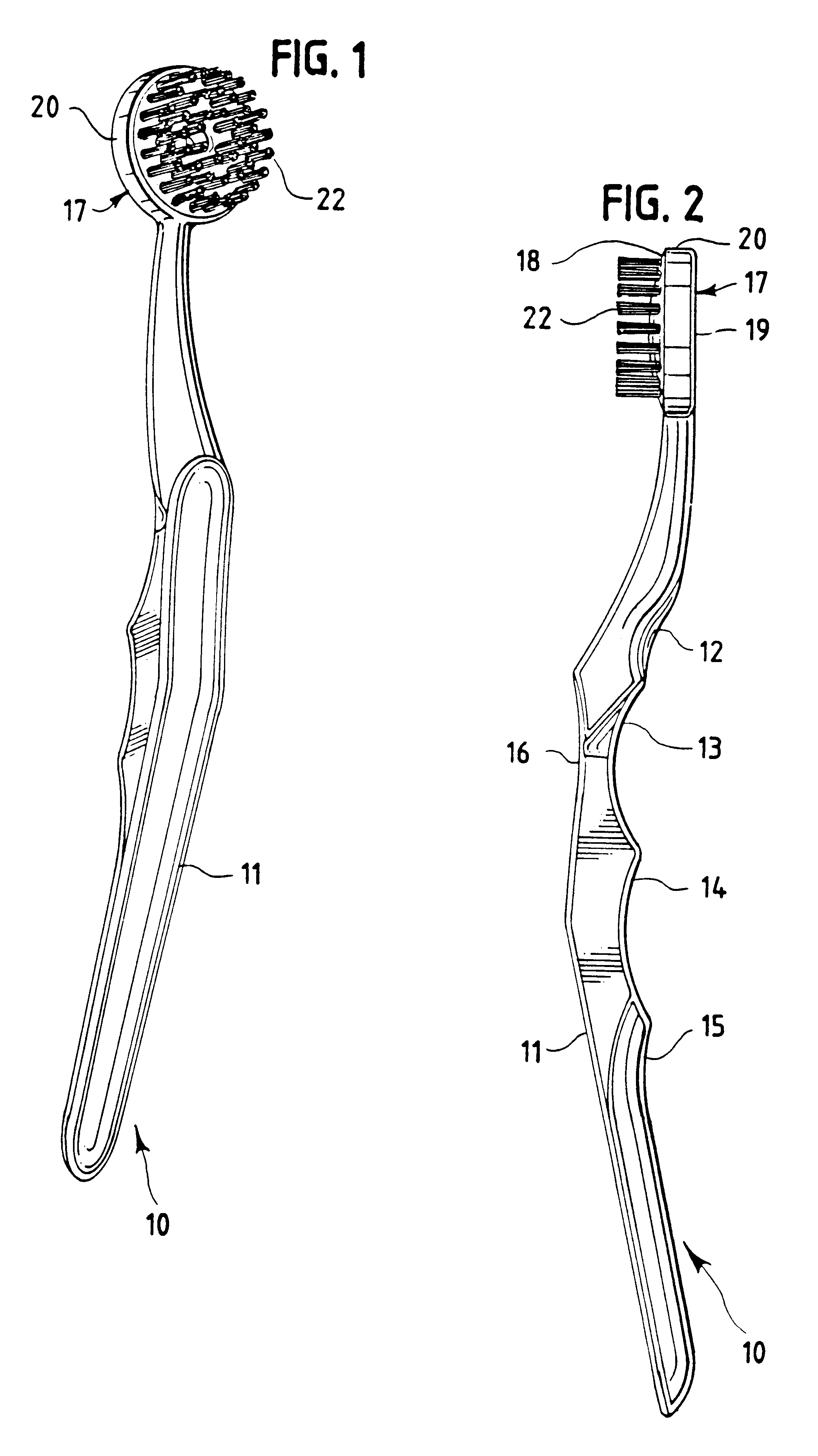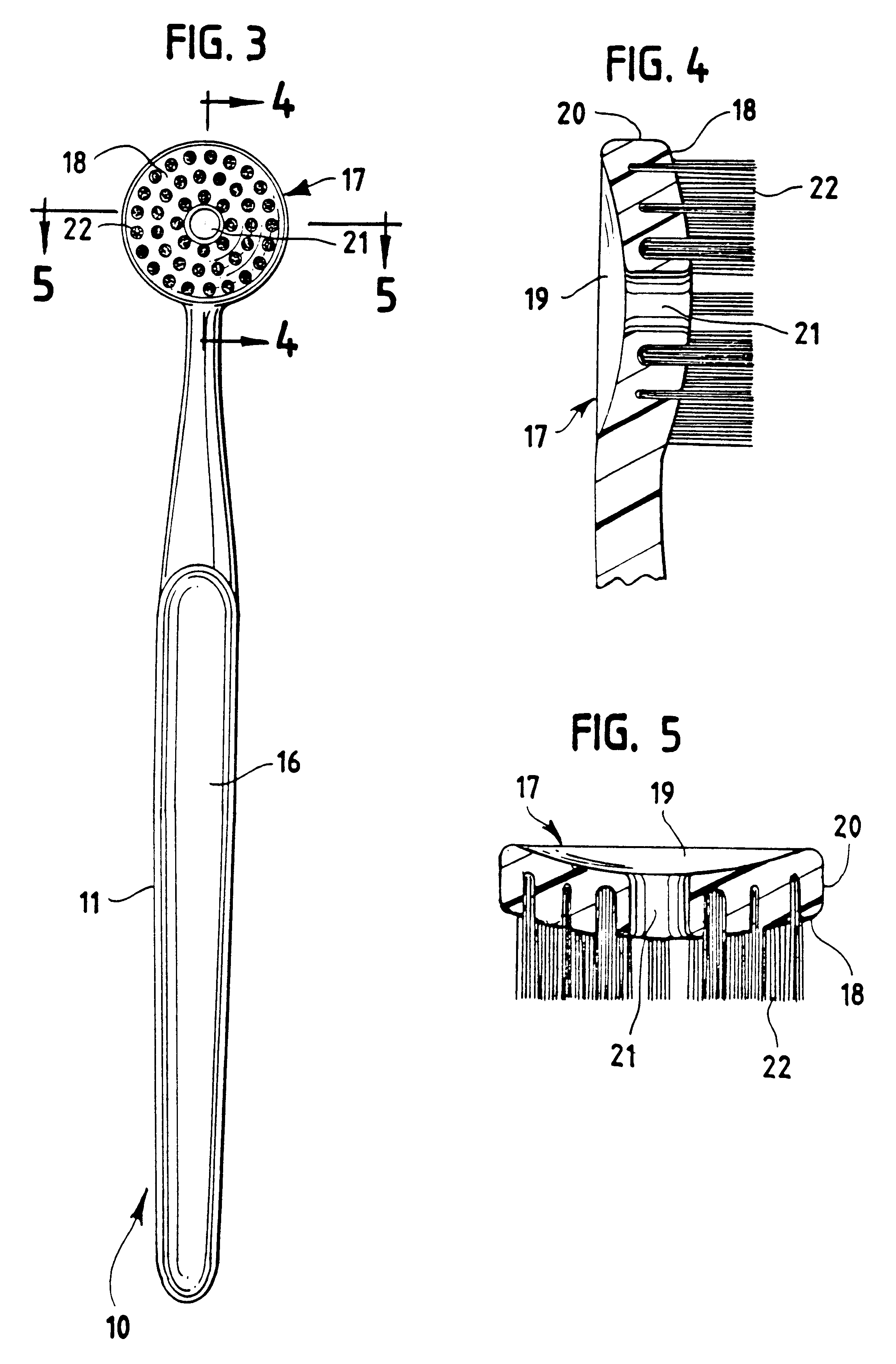Recently, however, research has revealed that the predominant source of
bad breath is bacteria and food buildup on the dorsum (or top) of the tongue.
The tongue, however, being an irregularly-shaped mobile
mass of striated
muscle covered by
mucous membrane, is not an easy surface to cleanse.
While the tongue's muscular nature allows its shape to be altered quickly and extensively in performing its functions, that same muscular nature and rapid and extensive alteration of shape prevents convenient cleansing.
As a result, the tongue's surface is uneven both macroscopically and microscopically.
That lack of evenness makes cleansing of the tongue even more difficult.
Each of those means known in the prior art, however, has significant deficiencies, either in cleansing or other defects.
First, bristles individually dislodge and extract materials from the surface being brushed by exerting a vertical and lateral pressure on those materials.
However, scraping devices are only minimally effective at dislodging and removing bacteria and food buildup from only the uniform surface features of the dorsum.
Moreover, due to their simple designs, scraping devices are not at all effective at dislodging and removing bacteria and food buildup from the uneven features of the dorsum, especially the microscopic features.
Conventional toothbrushes, while being perhaps the most common devices used to cleanse the tongue, suffer some of the most significant deficiencies in both cleansing and use-related aspects.
Those same characteristics that make conventional toothbrushes especially effective at cleaning the teeth make them unsuitable for cleansing the tongue.
First, conventional toothbrushes tend to have a high profile due to their long, soft bristles.
The length of such bristles allows a
toothbrush to reach into the crevices between and around teeth and provides a safe margin between the tips of the bristles and the hard base of the
toothbrush, but also makes the
toothbrush difficult to fit into the rear portion of the mouth.
That is significant in that such a
brush cannot be used easily to cleanse the tongue without causing a "gag
reflex" to occur.
Second, although the softness of the bristles of conventional toothbrushes prevents damage to the teeth and
gingival tissue, such softness also makes it difficult to exert sufficient downward pressure on the tongue with the bristles so as to dislodge bacteria and food buildup from the tongue and its numerous crevices and contours effectively.
Third, while the generally slender configuration of the cleansing head on conventional toothbrushes allows them to fit into the narrow spaces between lips and teeth and the tongue and teeth, it prevents such devices from covering a sufficient surface area quickly, as is required to provide efficient cleaning over the wide surface area presented by the tongue.
Accordingly, conventional toothbrushes are unsuitable for cleansing the tongue.
Like conventional toothbrushes, however, these devices suffer significant deficiencies in both cleansing and other defects.
First, as discussed above, devices that employ scrapers or very short bristles to scrape the tongue cannot cleanse the numerous contours of the tongue effectively because they cannot penetrate into the furrows, grooves, folds, and cavities of the tongue, especially the microscopic features.
Nor can such devices accommodate cleansing of the protrusions or projections from the surface of the tongue while maintaining contact with surface of the tongue.
Second, such devices are not conducive to use with a cleansing medium because they either lack substantial, flexible bristles which will build lather, or provide only minimal space between the tongue and the
solid portion of the head of the device, thereby preventing the scrubbing action necessary to build lather for cleansing the tongue.
Combination scraper-brushes tend to suffer the same problems as scrapers, as well as several additional problems.
First, for the scraper and bristles both to be effective, both must be relatively short (otherwise the device will have too high a profile and, like conventional toothbrushes, will elicit a strong "gag
reflex").
Because the scraper must be short, mucous and food tend to accumulate between the scraper blade and the head of the device, decreasing the effectiveness of the scraper and making it difficult to clean.
Because the bristles must be short, they are
abrasive, uncomfortable and potentially injurious to the user, do not flex or agitate enough to develop lather effectively, and tend to "gum up" with mucous, food, and dried cleaning media.
As a result, combination scraper-brushes tend to be less effective in use than either scrapers or brushes and also tend to be more difficult to clean.
Such devices generally use motors or complex mechanical systems to agitate the bristles of the
brush.
They are, accordingly, expensive, more prone to break, and more difficult to control than simpler brushes.
 Login to View More
Login to View More  Login to View More
Login to View More 


